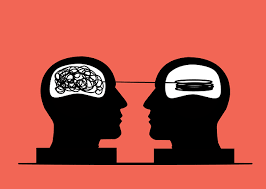In the embroidery of human feelings, uneasiness is a string that can mesh its direction into the texture of our regular routines. A complex and frequently misconstrued peculiarity rises above simple apprehension or stress. This article digs into the profundities of tension, investigating its complexities, effects, and ways of exploring the maze of mental disturbance.
Characterizing Tension
Nervousness is certainly not a solid encounter; rather, it appears in different structures, going from summed up uneasiness jumble (Stray) to explicit fears, alarm problems, and social tension. At its center, tension is a versatile reaction to stretch, setting up the brain and body for likely dangers. Notwithstanding, when this reaction becomes lopsided or ongoing, it changes into a considerable foe, influencing one's everyday work and general prosperity.
The Cutting edge Plague
In the 21st 100 years, nervousness has turned into a predominant worry, with a critical piece of the worldwide populace wrestling with its belongings. The quick-moving nature of current life, consistent availability through innovation, and cultural assumptions add to the ascent of tension problems. Understanding this contemporary scourge requires a complex methodology that considers organic, mental, and ecological variables.
The Natural Premise:
Nervousness is well established in the perplexing dance of synapses inside the mind. Lopsided characteristics in serotonin, dopamine, and gamma-aminobutyric corrosive (GABA) can add to the advancement of nervousness issues. Hereditary qualities likewise assume a part, as people with a family background of nervousness are more helpless. Perceiving the natural underpinnings of uneasiness is significant for creating designated intercessions and decreasing the disgrace encompassing emotional wellness.
The Mental Scene
The psyche is a huge scene, and nervousness frequently tracks down its traction in contorted thought designs. Catastrophizing, overgeneralization, and compulsiveness are normal mental bends related to uneasiness. Treatment, especially mental social treatment (CBT), offers devices to explore these psychological scenes, engaging people to challenge and rethink maladaptive contemplations.
Social and Natural Impacts
Past individual science and brain research, uneasiness is affected by outside factors. Cultural assumptions, peer pressure, financial stressors, and awful encounters can add to the turn of events and worsen nervousness problems. Tending to these outside impacts requires a comprehensive methodology that thinks about the interconnectedness of individual prosperity with more extensive social designs.
The Effect on Day to day existence
Uneasiness isn't restricted to the domain of contemplations and feelings; its effect reaches out to actual well-being and day-to-day work. Constant nervousness can prompt rest unsettling influences, stomach-related issues, muscle pressure, and cardiovascular issues. Also, it disables mental capability, influencing fixation, independent direction, and memory. Perceiving the comprehensive effect of uneasiness highlights the direness of viable intercessions.

Exploring the Maze
Overseeing uneasiness is not a one-size-fits-all undertaking. A blend of remedial modalities, way of life changes, and, at times, prescription can shape an extensive way to deal with exploring the maze of uneasiness. Care rehearses, for example, contemplation and profound breathing activities, offer a method for mooring oneself right now, breaking the pattern of genuine fears.
The Job of Social Help
The force of human association ought to be acknowledged with a sober mind in the fight against tension. Building an encouraging group of people of companions, family, or care groups gives a well-being net to people wrestling with tension. A humane and understanding local area can contribute fundamentally to breaking the detachment that frequently goes with psychological well-being battles.
Destigmatizing Emotional well-being
Fundamental to tending to uneasiness is destigmatizing emotional well-being. Open discussions, training, and promotion add to destroying the obstructions that keep people from looking for help. Normalizing conversations around psychological wellness encourages a culture where looking for help is viewed as a strength, not a shortcoming.

Conclusion:
Tension is a complex peculiarity profoundly imbued in the human experience. By unwinding its strings and understanding its intricacies, we can develop a more empathetic and informed way to deal with psychological well-being. Exploring the maze of uneasiness requires cooperative exertion — drawing on the qualities of science, brain research, and society to make an embroidery of strength and prosperity.


You must be logged in to post a comment.